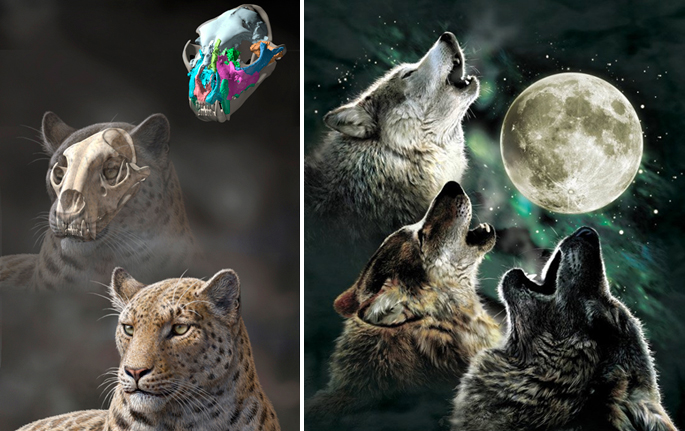Scientists discovered the oldest big-cat fossil ever — and illustrated it like a three-wolf moon
The latest evidence suggests that Mr. Whiskers' ancestors came from Asia, not Africa

Cats. Where did they come from? What were their ancestors like? Do they even like us? A new study could help us answer the first two questions, at least.
The study, published this week in the Proceedings of the Royal Society B, concerns an ancient snow leopard skull about the size of a grapefruit that could help us reconcile some of the more perplexing gaps in the feline fossil record.
Prior to this discovery, the oldest big cat fossil was the remains of a 3.7 million-year-old pantherine felid ("big cat") that had been dug up in Tanzania. However, DNA evidence has long suggested that modern big cats like lions, tigers, and leopards had an even older common ancestor in Asia. The thinking goes that big cats diverged from other cats around 11 million years ago, with modern variations appearing 6 million years ago.
The Week
Escape your echo chamber. Get the facts behind the news, plus analysis from multiple perspectives.

Sign up for The Week's Free Newsletters
From our morning news briefing to a weekly Good News Newsletter, get the best of The Week delivered directly to your inbox.
From our morning news briefing to a weekly Good News Newsletter, get the best of The Week delivered directly to your inbox.
So the fossil record points one way while genealogy points another. That's where this snow leopard skull comes in.
Discovered in Tibet in 2010, the skull is somewhere between 4.1 million to 5.9 million years old. That's "convincingly older than the current record holder," says Indiana University paleontologist David Polly, who wasn't involved in the study. This skull thus helps us inch closer to the working theory that big cats are of Asian origin.
This leopard wasn't very big. Study leader Jack Tseng of the American Museum of Natural History in New York and his colleagues estimate it to be just about 50 pounds. It probably dined on antelope and sheep that roamed the Tibetan plateau.
As an added bonus, the researchers' accompanying illustration (at left) looks a bit like a three-wolf moon.
A free daily email with the biggest news stories of the day – and the best features from TheWeek.com

A+ ancient cat art. Would wear.


